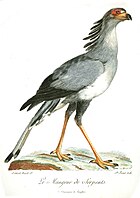
The avian genus Quiscalus contains seven of the 11 species of grackles, gregarious passerine birds in the icterid family. They are native to North and South America.

The genus Passerina is a group of birds in the cardinal family (Cardinalidae). Although not directly related to buntings in the family Emberizidae, they are sometimes known as the North American buntings.

Pipilo is a genus of birds in the American sparrow family Passerellidae. It is one of two genera containing birds with the common name towhee.
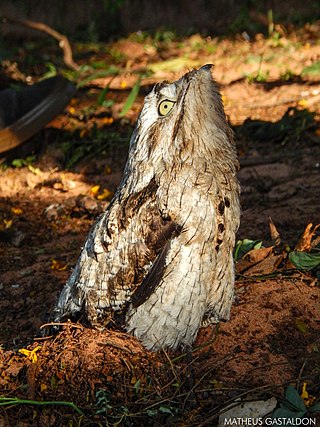
Nyctibius is a genus of potoos, nocturnal birds in the family Nyctibiidae.
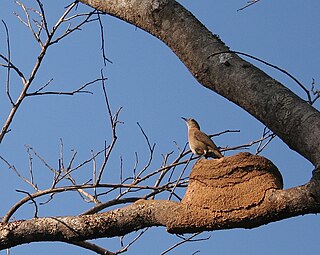
The hornero birds are members of the genus Furnarius in the family Furnariidae, native to South America. The English common name appears in many books as "ovenbird".

The plumbeous kite is a bird of prey in the family Accipitridae that is resident in much of northern South America. It is migratory in the northern part of its range which extends north to Mexico. It feeds on insects which it catches either from a perch or while in flight.

The genus Sturnella are North American grassland passerine birds called meadowlarks. The genus was previously lumped with the South American meadowlarks now placed in the genus Leistes.

The Mississippi kite is a small bird of prey in the family Accipitridae. Mississippi kites have narrow, pointed wings and are graceful in flight, often appearing to float in the air. It is common to see several circling in the same area.

Circaetus, the snake eagles, is a genus of medium-sized eagles in the bird of prey family Accipitridae. They are mainly resident African species, but the migratory short-toed snake eagle breeds from the Mediterranean basin into Russia, the Middle East and India, and winters in sub-Saharan Africa and east to Indonesia.
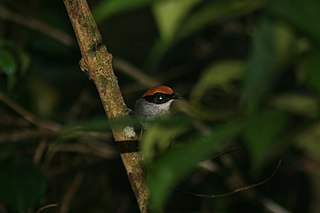
Conopophaga is a genus of birds in the gnateater family. Its members are found in forest and woodland in South America.

The friarbirds, also called leatherheads, are a groups of 18 relatively large honeyeaters in the genus Philemon. Additionally, the single member of the genus Melitograis is called the white-streaked friarbird. Friarbirds are found in Australia, Papua New Guinea, eastern Indonesia, and New Caledonia. They eat nectar, insects and other invertebrates, flowers, fruit, and seeds.

The Pompadour green pigeon, Sri Lanka green pigeon or Ceylon green pigeon is a pigeon in the genus Treron. In Sri Lanka, this bird and several other green pigeon are known as bata goya in the Sinhala language. It is found in the forests of Sri Lanka. Many authorities split the species from the pompadour green pigeon complex.
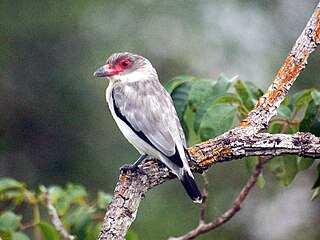
The tityras are passerine birds in the genus Tityra in the family Tityridae. They are found from southern Mexico, through Central America, to northern and central South America, including Trinidad.

Coccyzus is a genus of cuckoos which occur in the Americas. The genus name is from Ancient Greek kokkuzo, which means to call like a common cuckoo. The genus includes the lizard cuckoos that were formerly included in the genus Saurothera.

Lanio is the genus of shrike-tanagers in the family Thraupidae.
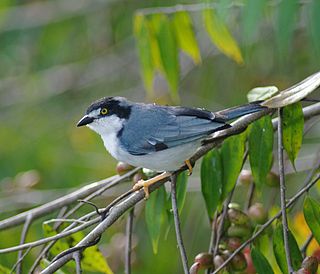
Nemosia is a genus of South American birds in the tanager family Thraupidae.

Monasa is a genus of puffbirds in the Bucconidae family.
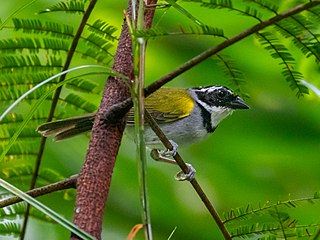
Arremon is a genus of neotropical birds in the family Passerellidae. With the exception of the green-striped brushfinch which is endemic to Mexico, all species are found in South America, with a few reaching Central America.
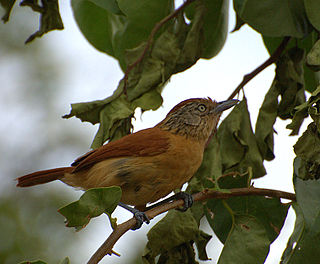
Thamnophilus is a genus of antbird in the antbird family, Thamnophilidae. The species in this genus are commonly known as antshrikes. They are insectivores that feed by gleaning prey from foliage and are found in the Neotropics.

The wood quails are birds in the genus Odontophorus of the New World quail family, which are residents in forests in the Americas. The core range of the genus is centered in the lowlands and foothills of the northern Andes of Colombia and the mountain ranges of Central America; however, some species occur elsewhere in tropical and subtropical South America.


























